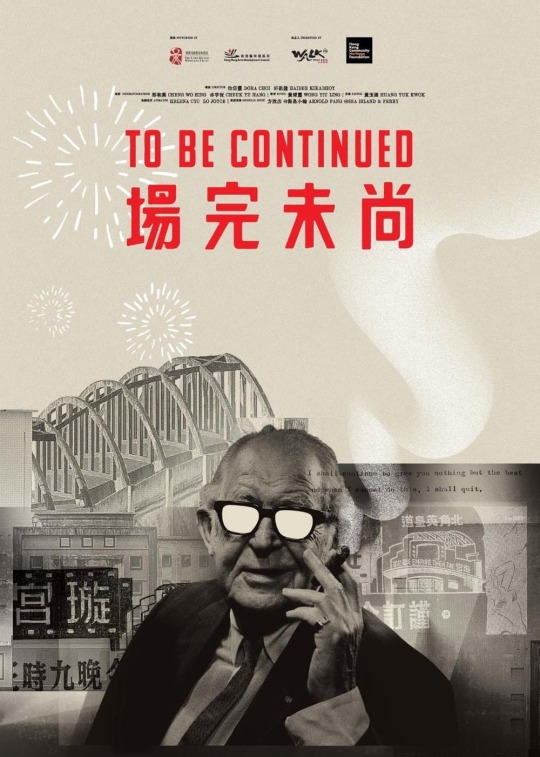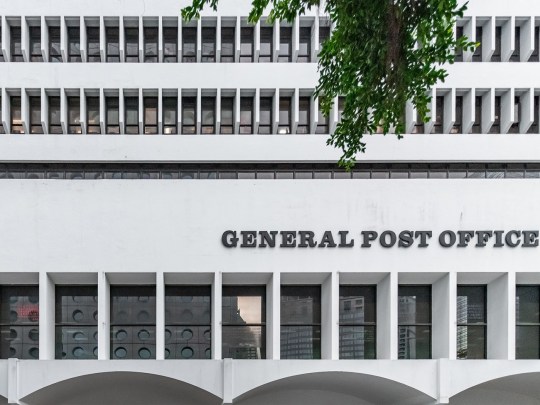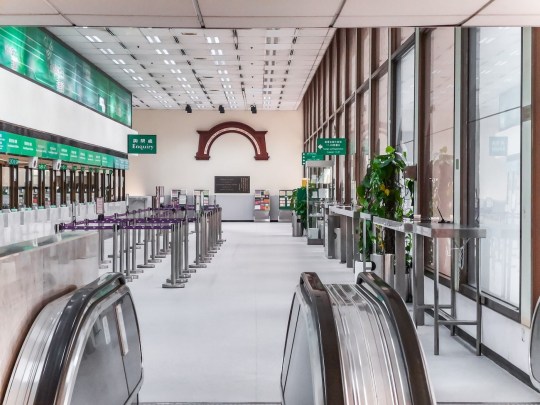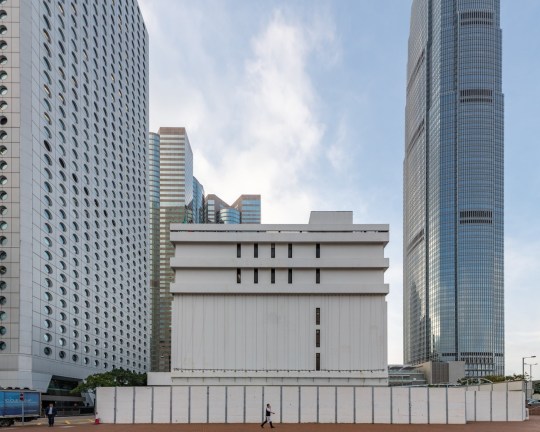#Haider Kikabhoy
Photo

The Story Of The 1st Impresario In Hong Kong Mr Harry Odell, His Empire Theatre (璇宮戲院) & To Be Continued尚未完場, The Touching Film About This Jewish Man
An ‘impresario’ is a person who organizes and finances concerts, plays and operas. Art intermediaries are important. They make the availability of art performances much more accessible for the public. A good impresario knows well the audience and their needs.
Mr Harry Odell, a Jewish man, was born in 1896. He came to live in Hong Kong in 1921 and died in 1975 at the age of 79.
It was said that his real name was ‘Harry Obadofsky’. He was the son of Russian Jewish parents. He was educated at St. Francis Xavier’s College, in Shanghai. He ran away from home at 16 and supported himself as a tap dancer in Japan, before emigrating to the USA. In 1921, Obadofsky arrived in Hong Kong and changed his surname to Odell for the reason of marrying a girl Sophie Weill whose family owned the prestigious jewellery business Sennet Freres in Hong Kong. He fought in the defence of Hong Kong in 1941 and was made a prisoner of war by the Japanese.
Mr Odell loved art and culture. By persuading international acclaimed artists such as Xavier Cugat and Issace Stern to perform here in the colony in those years, he was the first impresario in the history of Hong Kong. He tirelessly lobbied the colonial government to build a permanent place for art performances. As a result, the first such venue, Hong Kong City Hall, was completed in 1962(information provided by Judy Green from 'The Dictionary of Hong Kong Biography’).
Mr Odell built his own concert theatre and film cinema known as the ‘Empire Theatre璇宮戲院’ in 1952. It was located in the North Point area along King’s Road and in those years, North Point was regarded as a remote place. Business was bad and it closed in 1957, and re-opened in 1959 as the ‘State Theatre皇都戲院’ following the purchase by a rich Chinese businessman and extensive renovations. The State Theatre sadly closed in 1997.
Concerns were raised in 2015 that the heritage building might be demolished. In 2020, a big property developer in Hong Kong New World Development acquired the ownership right of the Theatre and put forward good proposals related to the conservation of State Theatre. The Theatre is being repaired and will be opened soon for the third time.
The above is not just a story of history. It is a love story of how Harry Odell loved Hong Kong and how we loved this art hero. His life is one big touching story with hundreds of little touching stories within it.
2 film directors, Dora Choi & Haider Kikabhoy, made an evocative documentary movie about the noble story of Harry Odell and it is called To Be Continued 尚未完場. This piece of impressive work looks back on the history of the State Theatre (formerly the Empire Theatre) and the great life of Harry Odell. A film critic wrote this: “Kikabhoy and Choi created a film that is not just educational; it is also upbeat, amusing and heart felt at the same time.”
Apart from visiting Odell’s grave in Happy Valley and gazing at Odell’s former residence Old Alberose in Pokfulam, you must watch this heart-warming good film To Be Continued!
Maurice Lee
To Be Continued Trailer https://youtu.be/U6GICy7Nmpc Acknowledgement – 尚未完場
Hong Kong City Hall https://youtu.be/fg97X8gfsrA Acknowledgement – Online Museum
State Theatre https://youtu.be/S7D0U8DgEyo Acknowledgement – Bloomberg Television
#Sophie Weill#Sennet Freres#Xavier Cugat#Issace Stern#Judy Green#Dora Choi#Haider Kikabhoy#Old Alberose#St. Francis Xavier's College#New World Development#Hong Kong City Hall#State Theatre皇都戲院#The Dictionary of Hong Kong Biography
0 notes
Link
“When the General Post Office opened on Hong Kong’s waterfront in 1976, with its white concrete facade, harsh angles and tinted glass—it became a fixture of Hong Kong’s downtown. But it was never added to the city’s register of protected landmarks. Now, with Hong Kong officials under pressure to generate revenue, the nearly 12-acre site, which has been valued at over $5 billion, was put up for sale this month.
Supporters of the building are scrambling to save it because whoever buys the land underneath would have every right to tear down the post office.
“Some people in Hong Kong might think it’s just a white box,” Charles Lai, an architect in Hong Kong, a Chinese territory, said on a fall afternoon outside the post office, where people were lined up inside to mail packages.
“But, as a matter of fact, this simplistic aesthetic is exactly where the value is,” he added.

“In cities across Asia, residents and design buffs are rallying to save or document postwar buildings that officials consider too new, too ugly or too unimportant to protect from demolition. Many of the structures were municipal buildings that served as downtown hubs of civic life. The campaigns, in a sense, are an attempt to preserve the collective memories stored inside.
The efforts also reflect an aversion to the generic-looking shopping malls and condominiums that have been replacing Modernist-style buildings across urban Asia, as well as the nostalgia of city dwellers who watch their skylines constantly change.

“Mr. Lai said the five-story Hong Kong post office building, designed by architect K.M. Tseng, working for the government’s Architectural Services Department, is interesting because its form defines the functions performed within—a principle of the Modernist movement that was popular from the 1920s to the 1970s. The floors for customers have loftier ceilings and larger windows, for example, than the ones for mail-sorting machines.
“The GPO is a simple, forward statement of what goes on inside the building,” Tseng told the Hong Kong Star in 1976. “From the ground one can see inside while the exterior design suggests the functions performed on each floor. I tried to make the building functional and truthful, an expression of what goes on within the concrete walls.”

“These are places that are part of people’s day-to-day life; they do not necessarily have to be very pretty to be significant,” Haider Kikabhoy, who leads heritage walking tours in Hong Kong, said of the city’s postwar landmarks.
With older buildings, the authorities “tend to focus on the rarity of the architecture or how well designed the building is, or the historical significance,” Mr. Kikabhoy said. “But there are many ways to understand history, and social history is just as important.”

“More than just a landmark, though, the GPO represents a period of civic-mindedness in Hong Kong, says Cecilia Chu, an assistant professor of landscape architecture at the University of Hong Kong and the president of the local chapter of Docomomo, an international organisation that promotes modern heritage.
A time when public institutions and civil society were quickly expanding. Mandatory schooling was introduced, shack-dwelling squatters were being given new homes in public housing estates, a public healthcare system was introduced. “A lot of mid-century buildings were built with the ideal of serving the public, not just the elite, and that makes them quite attractive,” she says. “They represent a different era of Hong Kong.””
read more: nytimes, 25.12.2020.
and “hong kong’s modern heritage, part i: the general post office.” zolimacitymag, 28.01.19.
2 notes
·
View notes